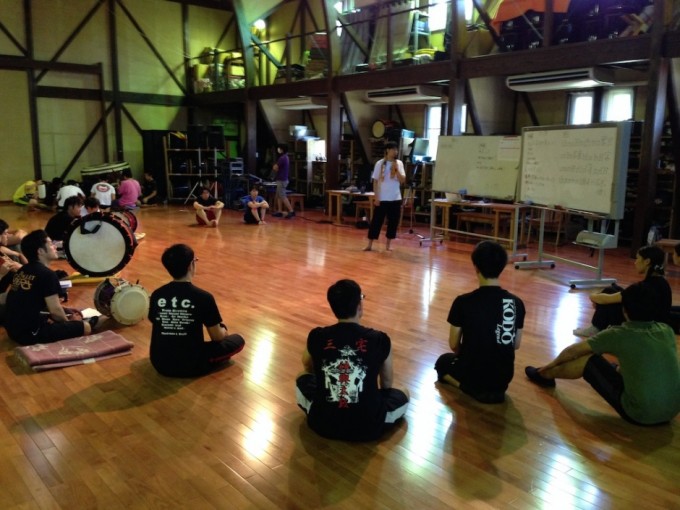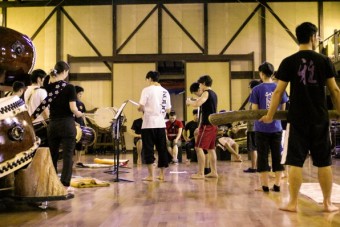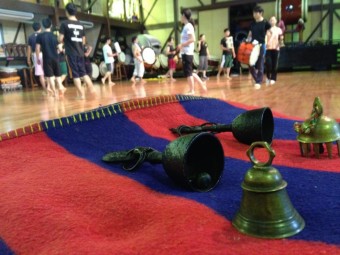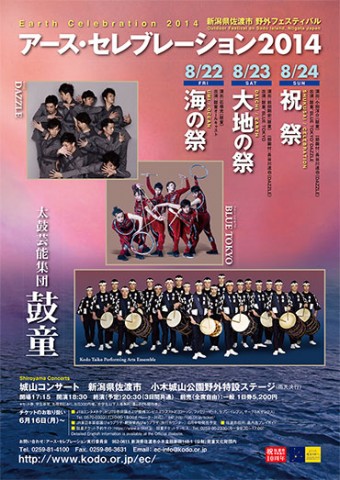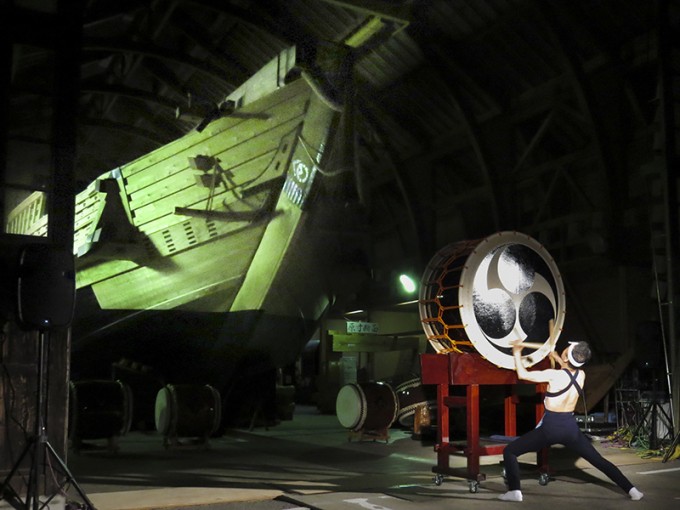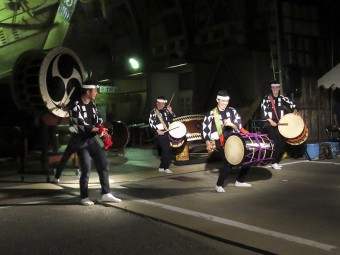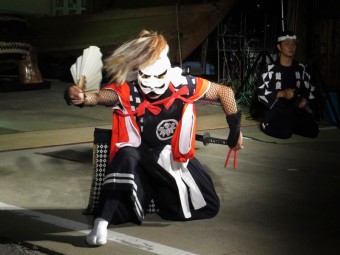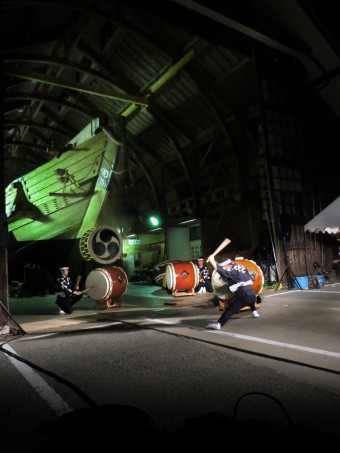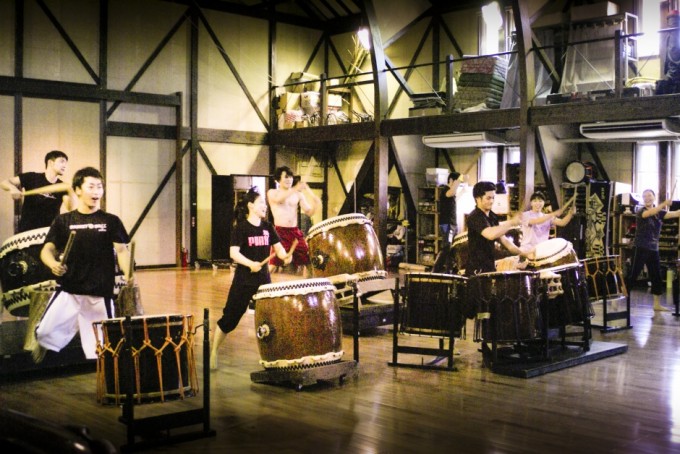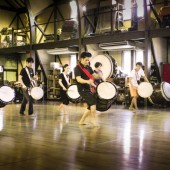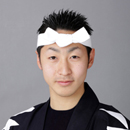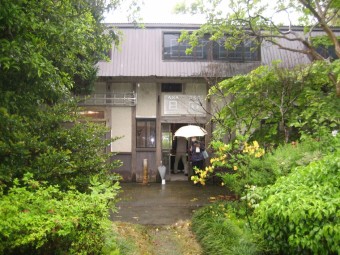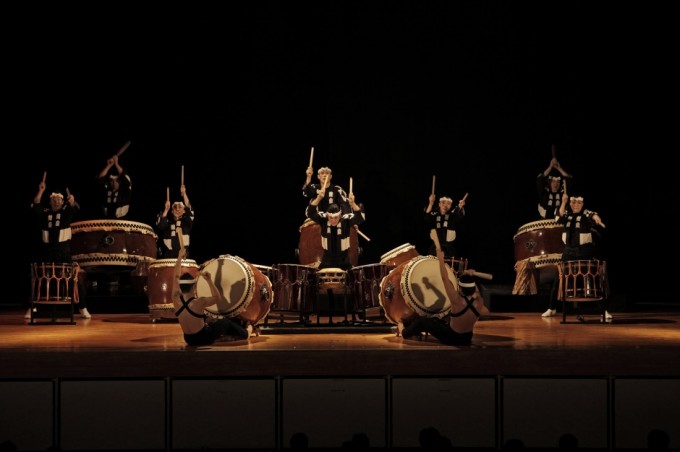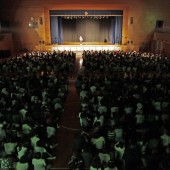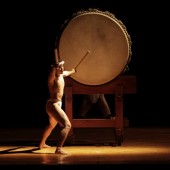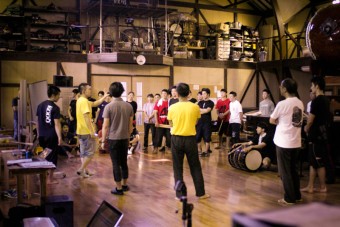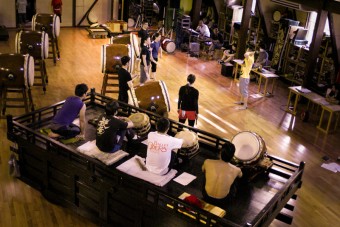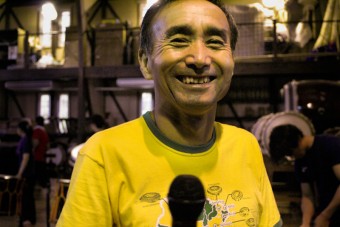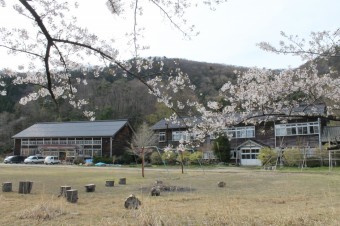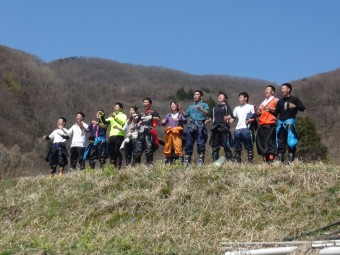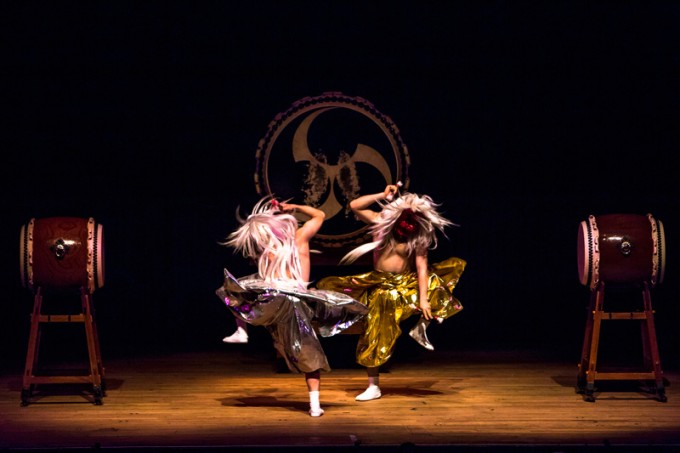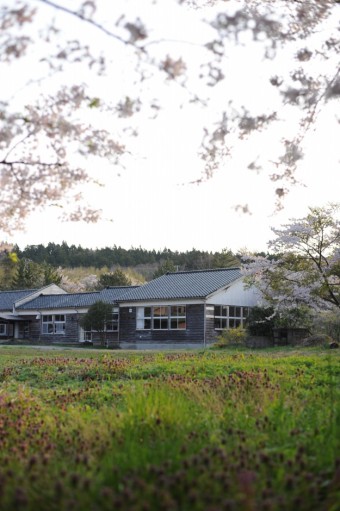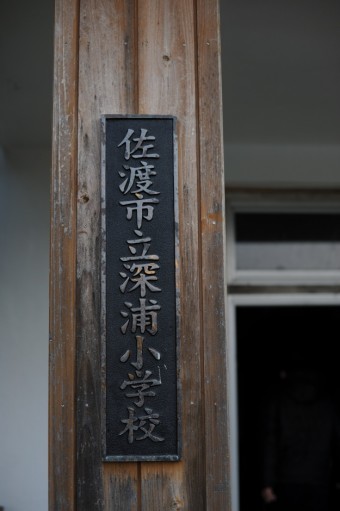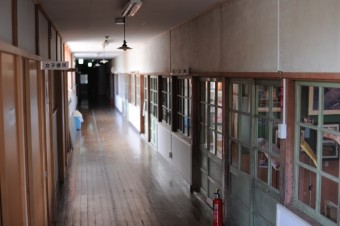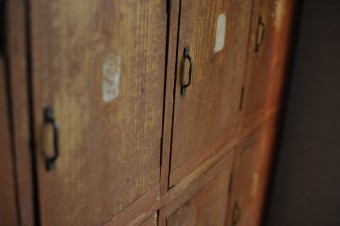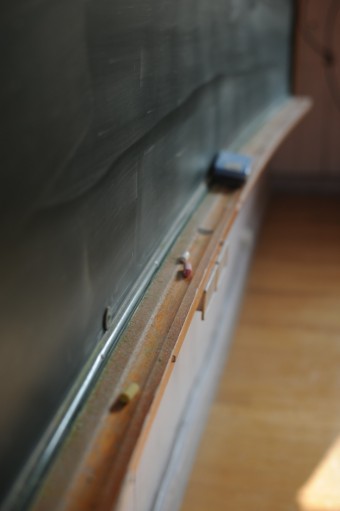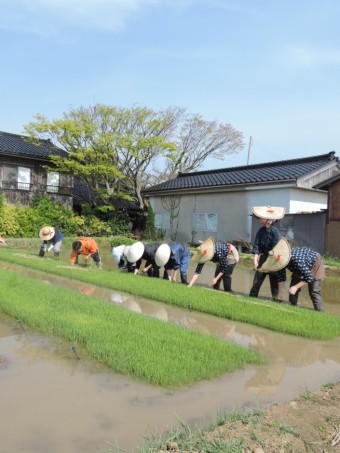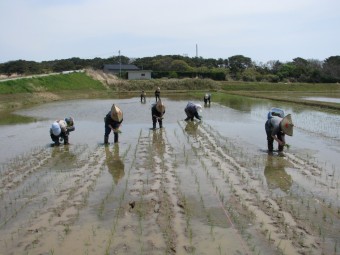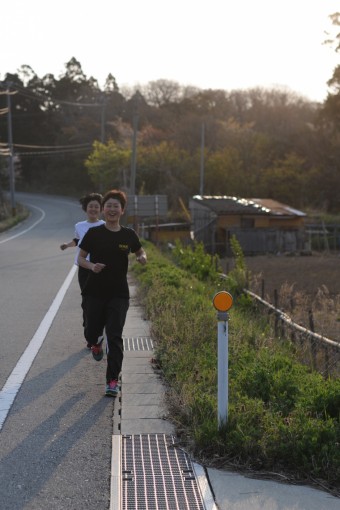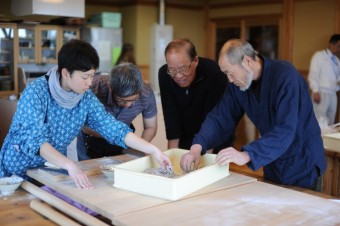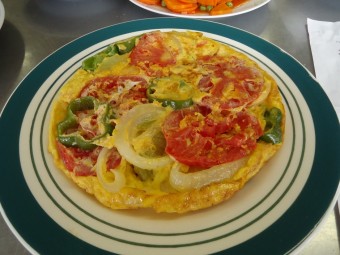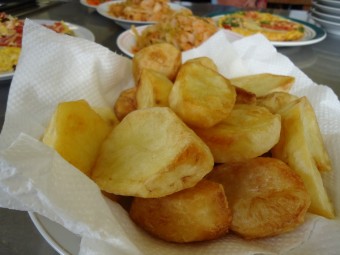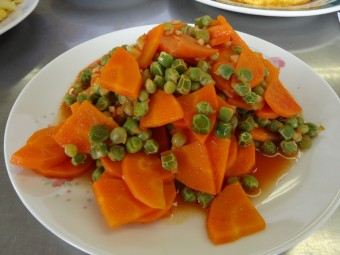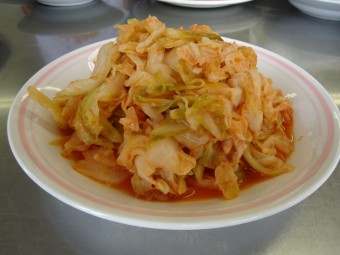Tag ‘Sado Island’
EC Shiroyama Concert Rehearsals for ‘DAICHI / EARTH’!” by Jun Akimoto
July 31, 2014
Earth Celebration Shiroyama Concerts
Rehearsals for Day 2 “DAICHI/EARTH”
Today we are having rehearsals for the Aug. 23 Shiroyama Concert “DAICHI / EARTH,” directed by Tsuyoshi Maeda. The rehearsal hall is filled with new sounds and interesting ideas. The artistic direction is really going to make the most of the outdoor concert atmosphere.
Before long, the guest artists will join us on Sado for rehearsals. I can’t wait to see the performance at Shiroyama Park!
Performance at “Hakusan-maru Matsuri” Eve Festival
Performance at “Hakusan-maru Matsuri” Eve Festival
The “Hakusan-maru,” a large gallant ship from the final years of the Edo Era, is resident at the Sado Ogi Folk Museum in Shukunegi on Sado Island.
On July 26, Kodo gave a performance on the eve of the annual festival held in its honor, “Hakusan-maru Matsuri,” right in front of the ship! Isn’t she grand?
Thank you very much to everyone who came along!
July 26, 2014 Hakusan-maru Matsuri Eve Festival (Sado Is., Niigata)
“Rehearsals for ‘Kozan Matsuri'” by Jun Jidai
July 26, 2014
Rehearsals for Sado Festival “Kozan Matsuri”
Today it is so sunny here on Sado Island. We’re in the middle of our rehearsals for tomorrow’s performance at festival “Kozan Matsuri,” trying to compete with the sun in terms of energy!
It’s one of our limited number of chances a year for people on Sado Island to see us perform, so we drum and drum, dripping with sweat in the summer heat, in preparation for the concert without caring at all about the blisters on our hands!
Please come along to see us tomorrow in Aikawa!
“A Visit to ‘Asa and Asa'” by Yoshikazu Fujimoto
From July 2014 Issue of Monthly Japanese Newsletter “Kodo”
Last March, Yoko and I visited Mr. Shigeki Hatakeyama on Sado, who taught us mat (floor) exercises during the early days of Ondekoza. Last year, his wife passed away, so Yoko asked me to go with her to light incense and offer a prayer for Mrs. Hatakeyama.
This couple always came to see our annual December performances on Sado Island together. When we visited their home for the first time, it was like a little art gallery. Their house is an old Japanese-style home, which was remodeled to make the most of the traditional style, and they have decorated it with a variety of artworks, creating a special harmony with both old and new pieces.
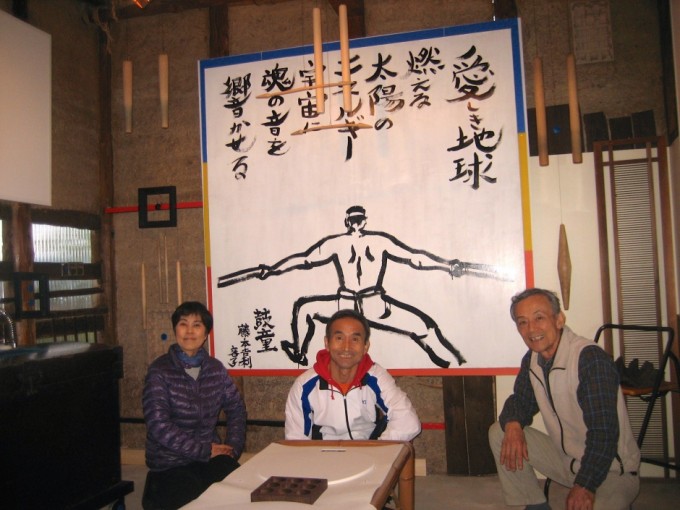
From the left: Yoko Fujimoto, Yoshikazu Fujimoto and Mr. Shigeki Hatakeyama
Mr. Hatakeyama was born in 1944 and turned 70 years old this year. He was a high school P.E. teacher in the seventies when he taught us. Ever since, he has made and sent a wonderful new-year card to Kodo every year. We found out he had made these with his wife. She was a also teacher, who taught Home Economics at Sado Girls’ High. After losing his beloved wife, Mr. Hatakeyama decided he had to make the art gallery that they had been thinking of opening together in the barn in front of their house. They wanted it to be a place for friends to come together. So he has been working away, establishing it with help from his friends.
In his gallery, there are some works created by Yoko and I on display. Some were made using my old bachi (drumsticks) and another piece is a picture on a large white panel, which Mr. Hatakeyama adorned with a tri-color decoration. So, this piece is a collaborative work created by the three of us. The name of this gallery is “Asa and Asa.”
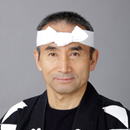
News: Article in “SINRA” Magazine
Article in “SINRA” Magazine
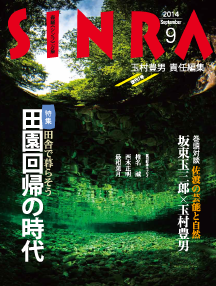
An interview with our artistic director Tamasaburo Bando and an article introducing Kodo are featured in the September 2014 issue of “SINRA” magazine. If you’re in Japan, we hope you’ll take a look.
SINRA WEB|http://sinraweb.jp/ (In Japanese)
“SINRA” September 2014 issue
Price: 1,200 yen (incl. sales tax)
On sale from July 24, 2014.
“Kozan Matsuri 2014” by Mitsunaga Matsuura
Performance at Kozan Matsuri 2014 on Sado Island
On July 27, Kodo performed at Sado’s annual summer festival “Kozan Matsuri.” Usually we appear in an event featuring just Kodo followed by fireworks, but this year Negicco, Chie Ayado, and Kiyotaka Sugiyama also made appearances.
Kodo’s performance took place at Aikawa Gymnasium in front of a large audience of around 1,500 people.
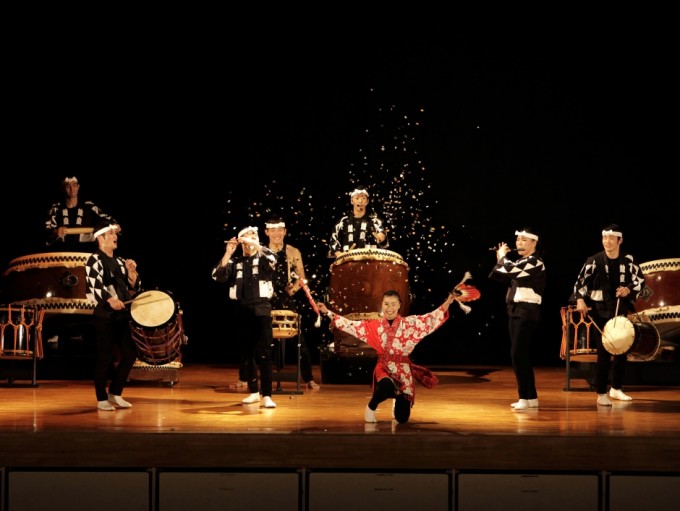
Due to unstable weather conditions, the fireworks display was postponed until the next day, but the festival crowd was suitably enlivened by the “explosion” of taiko beats and the confetti that burst out from Mariko Omi’s fans.
July 27, 2014 Kodo Performance at “Kozan Matsuri” (Sado Island, Niigata)
“EC Shiroyama Concert Rehearsals Resume!” by Jun Akimoto
Earth Celebration Shiroyama Concert Rehearsals Resume!
The Kodo members were off performing in many different places over the past months, but at last everyone has come back to Sado Island. Our rehearsals for Earth Celebration 2014, coming up this Aug. 22-24, have begun. The first rehearsals are for the opening night performance directed by Mitsuru Ishizuka, “UMI/OCEAN.”
This performance cast features all of the Kodo members, including this gentleman, the eldest one, who is always full of vigor!
“Kodo and Sado” by Tomohiro Mitome
July 1, 2014
This is Tomohiro Mitome, leader of taiko performing arts ensemble Kodo.
At the beginning of June, the rainy season set in around the Kanto area (near Tokyo) and I expected that it would reach us on Sado by mid-June. However, even though they have had rain on the mainland in Niigata, thanks to some westerlies we have mainly had just clouds and it’s been around 24 degrees on Sado most of the time. It’s is a little chilly in the morning and at night.
This month, I’m going to talk about the connection between Kodo and Sado.
Kodo Apprentice Centre (Kakinoura, Sado Island)
When you include the years of our antecedant group Ondekoza, about 40 years have passed since Kodo established its base on Sado Island. Before merging into one city (Sado City) a decade ago, the island was divided into ten municipalities. At first, our group was based in Hatano Town, then it moved to Mano Town, and finally we relocated to Ogi Town twenty-six years ago. The Kodo Apprentice Centre was located in Aikawa Town for six years, then in Mano Town for four years, and then it moved to its current home of Kakinoura nineteen years ago.
Most of the Kodo members now seen on stage are graduates from our Apprentice Centre in Kakinoura. Looking back, almost 200 young people to date have come to Sado Island to become Kodo apprentices. Some of them stayed on Sado after they finished the apprentice programme, and of course we, the Kodo members and staff, live on Sado, have families, and make our own connections in the community by living here and sending our children to school here.
If you want to know why our group chose Sado Island for its base, well, it’s a long story that requires some time to explain. If you are interested and can read Japanese, please read Kodo’s 30th anniversary publication Inochi Moyashite, Tatakeyo. – 30 Years of Kodo –. You will get to know a great deal about our group and learn about its roots. (Note: This book has Japanese text only with no English translation.)
Onidaiko from “Kodo One Earth Tour: Mystery”(Photo: Simon Jay Price)
“From Fukaura Gakusha (Fukaura Schoolhouse)” by Hirofumi Uenoyama
Fukaura Gakusha (Fukaura Schoolhouse)/ Trial First Year of the “Community Development Course”
This April, we launched our new “Community Development Course.” It offers the opportunity to learn from Sado’s nature and culture firsthand and uses those experiences to cultivate human resources who will activate local communities. For this first trial year, we have welcomed two trainees: Misaki Nakamura from Kiso, Nagano, and Misato Akazawa from Niigata City. The trainees are based at the former Fukaura Elementary School, which was renovated for a fresh start under the name “Fukaura Gakusha” (Fukaura Schoolhouse). The duo have begun their studies, which center on learning from locals about the area’s agricultural & fishing industries, festivals & traditional performing arts, preservation of historic architectural areas, culture and more.
The trainees produced a special Fukaura Gakusha unveiling event, held on April 20. They gained practical experience by planning and running the event, making fliers, and digging out memorabilia and photo albums that were left in the former school to display as a nostalgic exhibition on the day. The locals who joined us for the unveiling smiled as they reminisced about the school and relived various episodes from the past. It was a valuable experience for me to see firsthand the role this school had played in the region.
On May 4, the trainees took part in the “Kodo Special Performances on Sado Island” special event “Traditional Rice Planting,” under the guidance of master farmer Mr. Kenichiro Aoki. They experienced planting rice by hand in a traditional way using seedings from a semi-irrigated rice nursery. The trainees wore traditional work pants and bamboo hats and they worked very hard with other participants.
During the course of the year ahead, I would like to join the two trainees as they recognize and tackle local issues and problems. Through the trial and error, I hope that we can discover the real identity of “community development.”
The trainees’ reports are being shared on the Kodo Cultural Foundation Facebook page in Japanese. We hope you’ll take a look at their updates.
Kodo Cultural Foundation Facebook Page (in Japanese) https://www.facebook.com/KodoCulturalFoundation?fref=ts
About the “Community Development Course”
The Kodo Cultural Foundation has gained a wealth of experience by running the Kodo Apprentice Centre to date and to make further use of this know-how, the Foundation has taken the first step in setting up a new course, separate from the course for apprentices hoping to become Kodo performers, called the “Community Development Course.” This new courses aims to cultivate human resources who will activate local communities by using experiences gained learning from the nature and culture of Sado Island.
The Kodo Cultural Foundation would like to start off this course with practical activities that tackle the following themes: “What kind of trainee programme is required to cultivate active human resources for community development?”/ “What is ‘community development’?”/ “How can human resources work independently in community development?”/ etc.
“Rwandan Soul Food” by Kiyoko Oi
I took part in a Rwandan Home Cooking class on June 8.
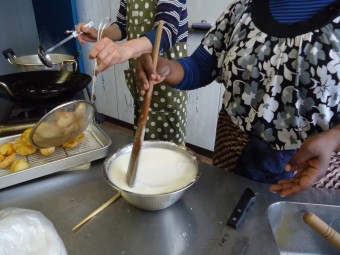
Instructor: Marie Louise Kambenga
President of NPO Think About Education in Rwanda/ Resident of Fukushima
*Menu*
・Rwandan Omelettes
・Stewed Cabbage with Tomatoes
・Stewed Beans and Carrots in Tomato Puree
・Fried Potatoes (Pre-boiled)
・Ugali (paste made from corn flour and water)
・Salt Covered Roasted Peanuts
・African Ginger Tea (with milk)
These mild dishes were mainly flavored with salt and tomatoes and they were all meat-free. Though simple, the flavor of the vegetables came out so nicely in the dishes that they make you eat a lot of vegetables for sure! If you like, you can also add a hot spice called akabanga to the dishes. I’m not so good with spicy foods, so when I tried it, at first it felt like a hot attack on my tastebuds. But then the heat faded away and the akabanga brought out even more flavor from the vegetables. If you try this spice, you could become hooked on it! We got to use maize, raw peanuts, akabanga and tea all brought here from Uganda.
When I think of Africa, I imagine the desert, but Marie said they have a lot of vegetables in Rwanda! The vegetables we used today are popular around Japan, so I am planning to cook these dishes for lunch at Kodo Village. Corn flour is not easy to get, but I think rice flour can be used as a substitute for it.
On June 7, Marie gave a lecture on “Important Things: Life, Peace & Education – A Look at Children as the Future” and the following day she held this cooking class as an exchange event. Thank you, Marie!
I will make use of this experience when I plan meals at Kodo Village.




